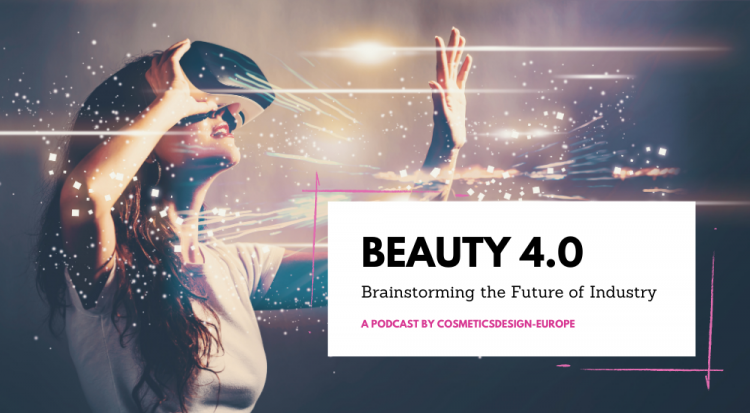Listen to Beauty 4.0 – A podcast by CosmeticsDesign-Europe
The future of beauty design? Think 3D printing, lab-grown ingredients, and real-time devices

In CosmeticsDesign-Europe’s third Beauty 4.0 Podcast – a digital series looking at how technology and innovation will shape beauty’s future – we catch up with Mike Webster, director of 3D structure and experience at UK branding and design agency 1HQ.
In this 26-minute podcast, Webster talks about what the future of beauty design might look like and what sort of innovative technologies can plug key needs in this space.
Lipstick 4.0 – a smart, refillable and statement device
Last year, Webster and his team at 1HQ designed a smart, refillable and statement 3D colour-printing lipstick device called ‘moi’. Whilst only a concept, and an idea that was probably at least 10-years off, he said sustainability and ultra-personalisation were key drivers.
“For me, packaging has to become more valuable to people; to consumers, and we have to start to revalue what it could be,” he said.
It was important that any design project – beauty or other – considered multiple angles, starting with user experience and how an object could be improved for the consumer, Webster said. In beauty, this came down to application, durability and protection of a formula, along with personalisation.
Cutting-edge technologies to watch – inkjet printing and lab-grown ingredients
Webster said 3D printing technologies offered significant potential for the beauty sector, and some brands were already working with this – the Opté wand and Mink printer two good examples.
But 3D printing in beauty faced hurdles, notably device size and cost, he said. Whilst it was already possible to nano-print, devices in beauty that used 3D printing were currently larger than traditional beauty items and costs remained relatively high. However, he said as more brands rolled out this technology, costs would come down and the ability to design small would rise.
Another “exciting space” beauty ought to consider carefully, Webster said, was use of lab-grown ingredients to plug sustainability concerns – a space food and drink was already heavily invested in. “The reality is we can’t keep using natural resources for our lifestyles, things are going to become depleted.”
The challenge in this space would be around naturalness, he said, but the ethical story could sway consumers.
“It’s important for the beauty industry to just open its eyes and look at all categories because there’s so much innovation happening in a number of different areas that there could be a lot of insight and inspiration to be gained,” Webster said.
Beauty 4.0 Podcast - more insight on the future of industry
For more detail on the future of beauty packaging and device design, with detail on what sort of business models would work best to secure successful rollouts, listen to our 26-minute podcast above or access our podcasts by subscribing via Apple Podcasts or finding us on Spotify.
This podcast was recorded on January 27, 2021.

![Estée Lauder says its two devices improve shelf-life and product efficacy - cooling and heating preloaded formulations upon application [Getty Images]](https://www.cosmeticsdesign-europe.com/var/wrbm_gb_food_pharma/storage/images/_aliases/wrbm_medium/publications/cosmetics/cosmeticsdesign-europe.com/article/2021/08/20/estee-lauder-companies-patents-on-cooling-and-heating-beauty-devices/12754121-1-eng-GB/Estee-Lauder-Companies-patents-on-cooling-and-heating-beauty-devices.jpg)









![Chinese study highlights mental health challenges in atopic dermatitis, emphasising holistic patient care. [Getty Images]](https://www.cosmeticsdesign-europe.com/var/wrbm_gb_food_pharma/storage/images/_aliases/wrbm_tiny/publications/cosmetics/cosmeticsdesign-asia.com/headlines/formulation-science/chinese-research-linking-atopic-dermatitis-to-mental-health-underscores-need-for-holistic-care/17040623-1-eng-GB/Chinese-research-linking-atopic-dermatitis-to-mental-health-underscores-need-for-holistic-care.jpg)








